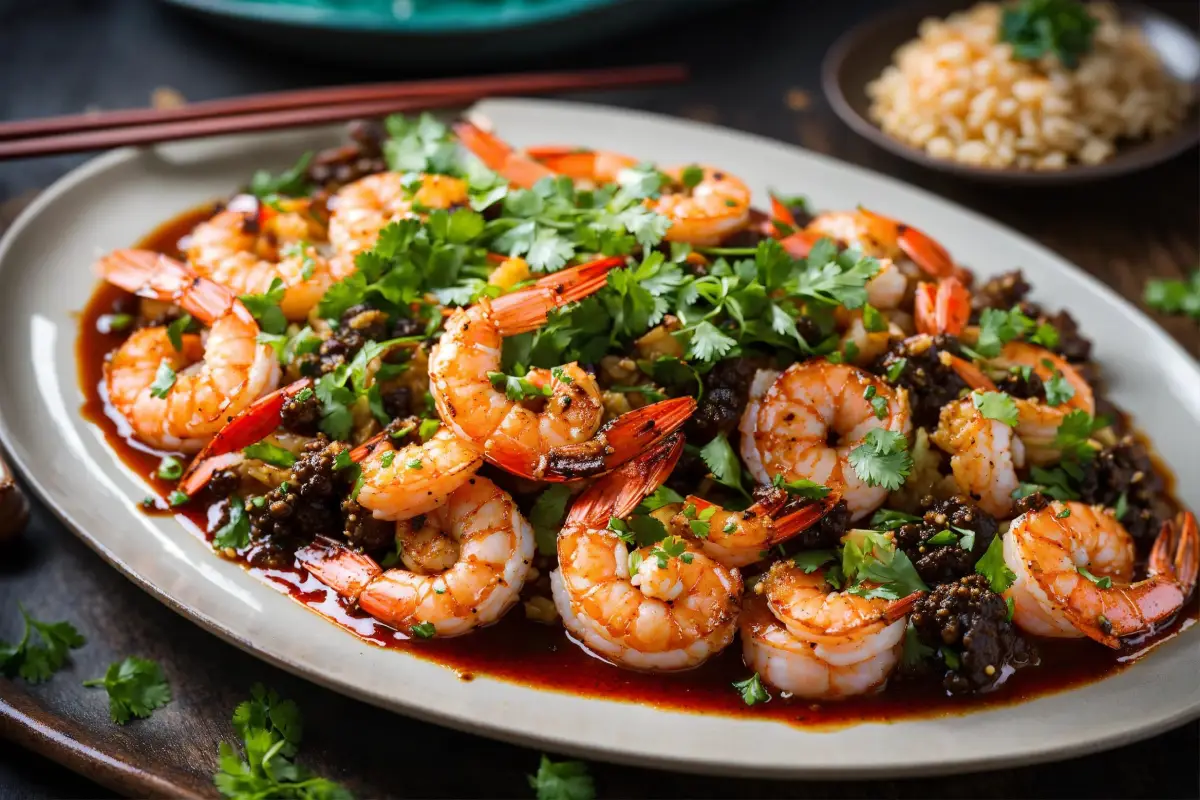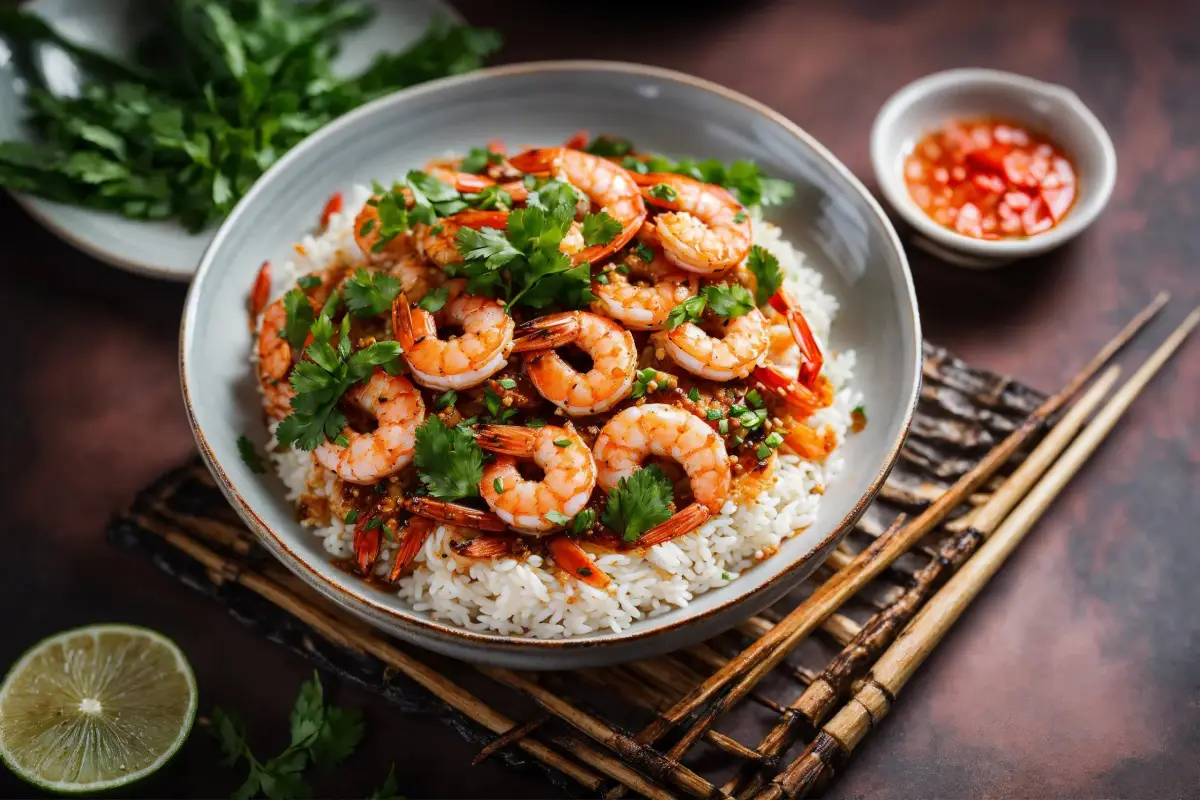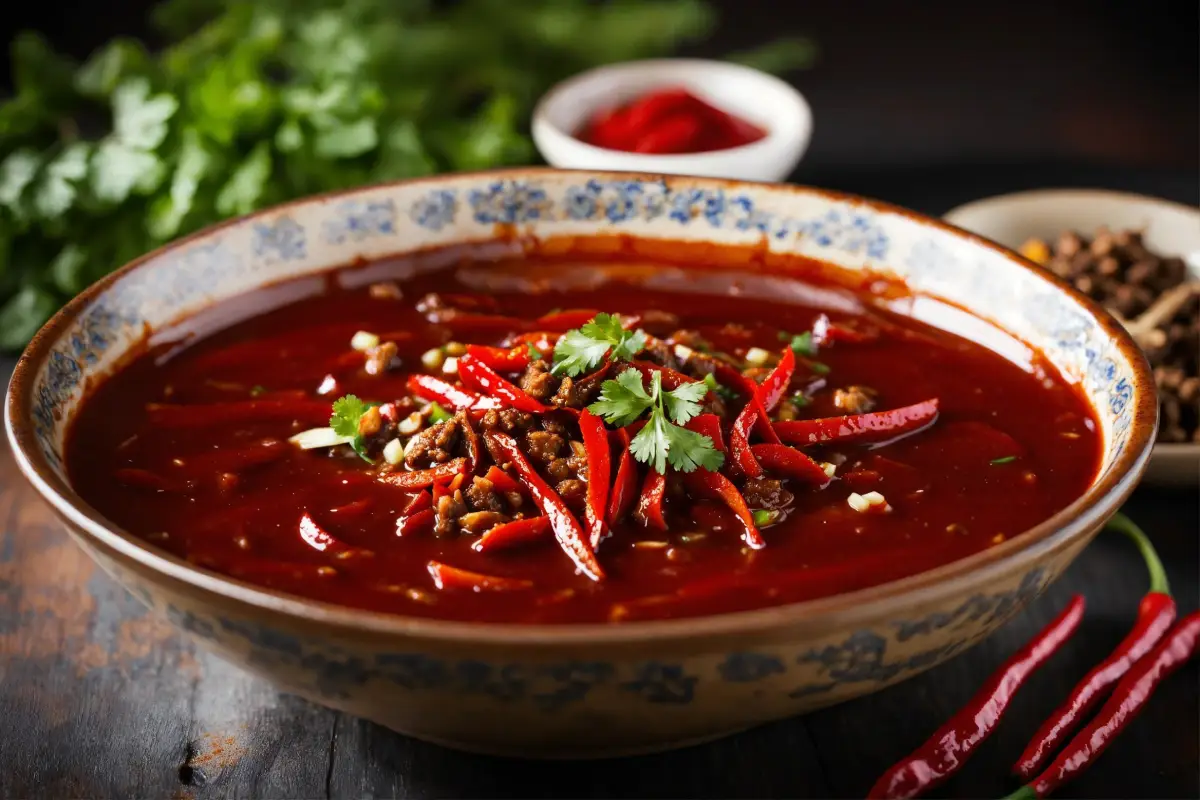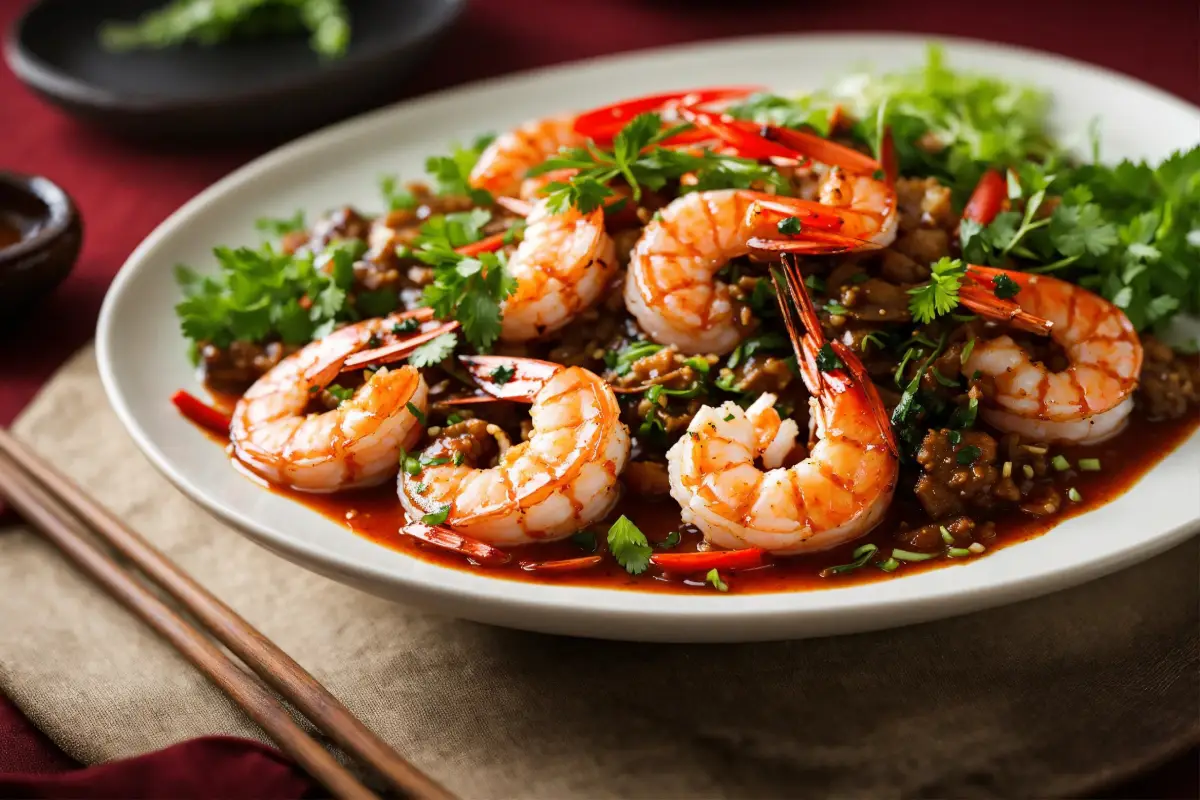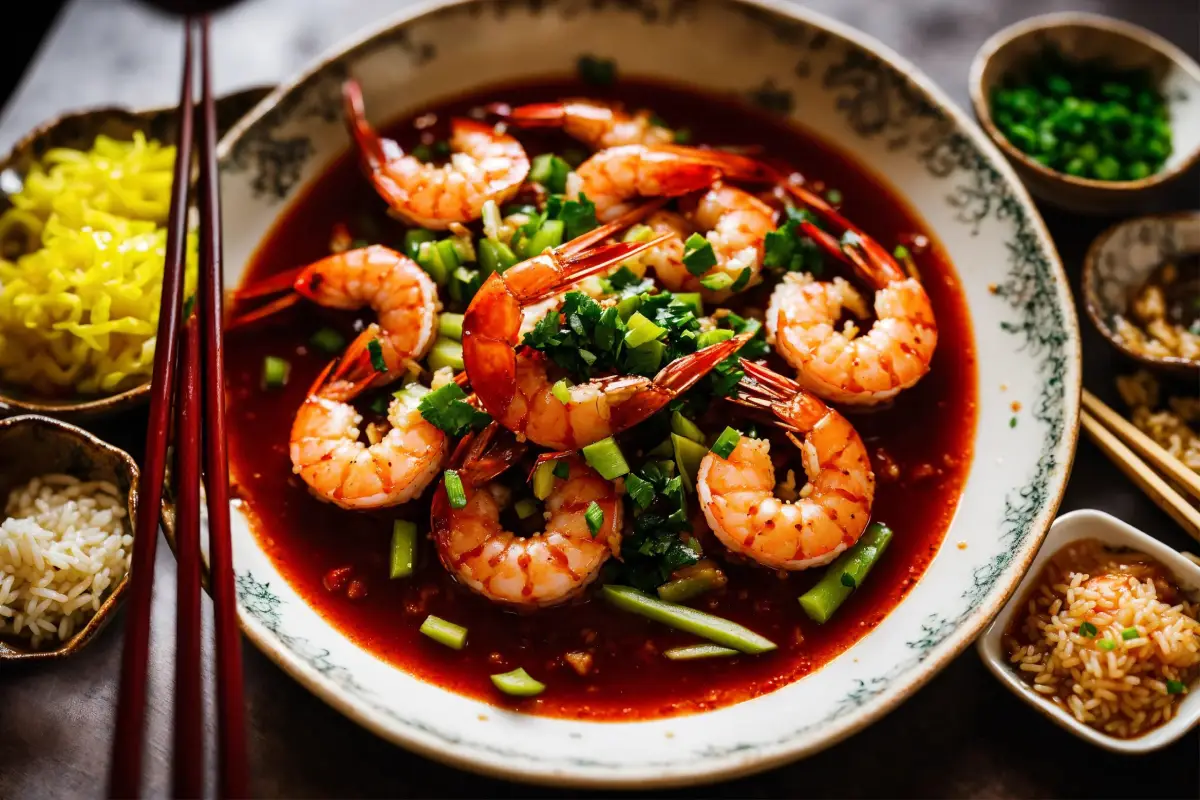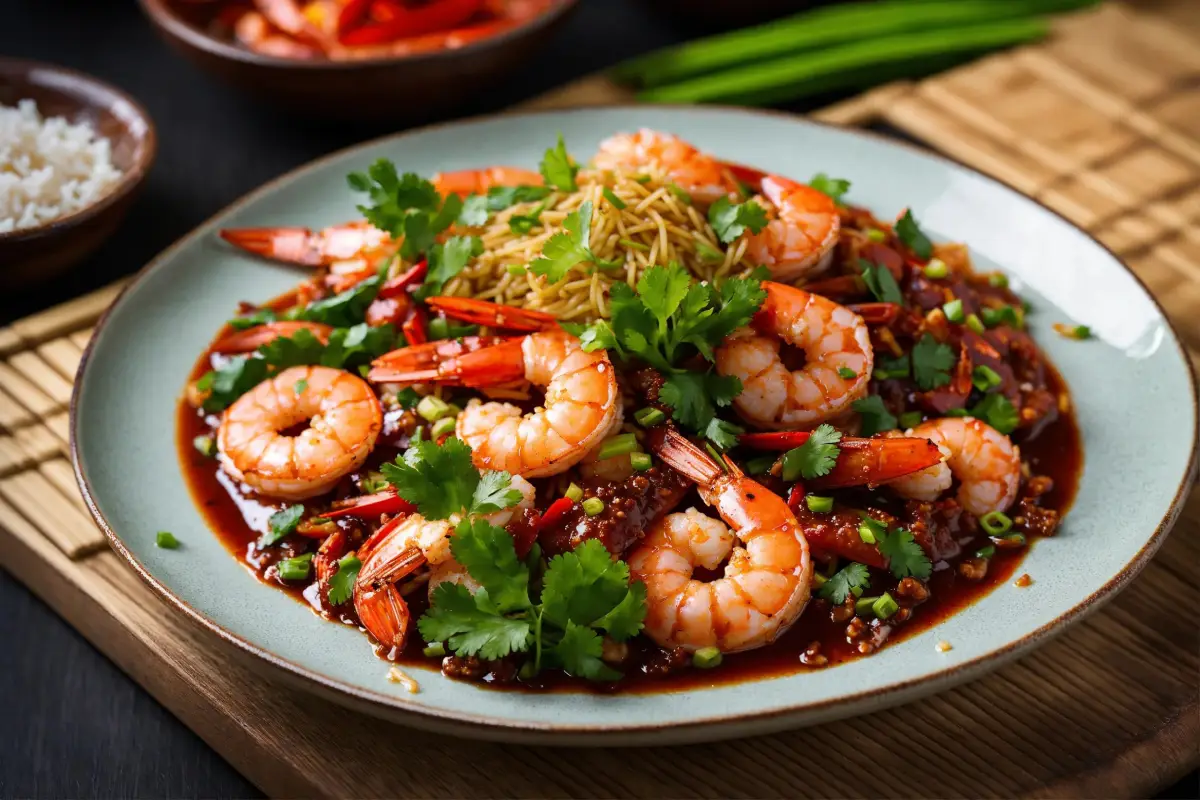Welcome to the spicy world of Hunan Shrimp, a cornerstone of Chinese cuisine. This dish isn’t just about heat; it’s a journey through tradition and bold flavors. Perfect for chefs and foodies alike, our guide dives into the essence of Hunan shrimp. We’ll explore its unique taste, how to cook it, and adapt it to any diet.
Ready to spice up your cooking game? Let’s uncover the secrets of Hunan shrimp together. Whether you’re hosting a dinner party or craving something fiery, this guide is your ticket to a delicious adventure. Dive in and let the flavors of Hunan transform your kitchen.
The Origins of Hunan Shrimp
Hunan shrimp originates from Hunan province in China, a region renowned for its bold and spicy flavors. In contrast to other Chinese cuisines that may lean towards sweetness or subtlety, Hunanese cooking boldly embraces heat, setting the stage for Hunan shrimp’s fiery reputation.
Furthermore, Hunan cuisine reflects the local people’s spirit: resilient, bold, and vibrant. These qualities shine through in their food, particularly in Hunan shrimp, which combines vibrant sauce and rich flavors. This dish is a testament to a culture that cherishes the depth and complexity of its ingredients, showcasing a harmony of contrasts.
Moreover, the global popularity of Hunan shrimp underscores its universal appeal. By blending tradition with contemporary tastes, it has become a beloved dish worldwide, proving that good food knows no boundaries. Hunan shrimp not only tantalizes the palate but also narrates the rich history and cultural connection of its people to their land.
What Makes Hunan Shrimp Unique?
Hunan shrimp captivates with its balance of heat and flavor, distinguishing it from merely spicy dishes. Its secret? A sauce rich in chili peppers, garlic, ginger, and seasonings, embodying Hunan’s culinary philosophy of harmony in contrast. This not only brings a fiery kick but also enhances the shrimp’s sweetness, creating a complex taste experience.
Moreover, its versatility shines, allowing adaptations for various diets without compromising its essence. This adaptability has broadened its appeal, making Hunan shrimp a beloved choice across different culinary traditions.
In summary, Hunan shrimp offers a unique taste adventure. Its blend of flavors, thoughtful preparation, and flexibility make it a standout in Chinese cuisine, inviting diners to explore Hunan’s rich flavors in every bite.
Exploring Hunan Sauce: The Heartbeat of Hunan Cuisine
At the core of Hunan shrimp’s captivating flavor is its Hunan sauce—a spicy, aromatic, and deeply flavorful concoction that embodies the spirit of Hunan cuisine. This sauce, with its perfect blend of heat, tang, and sweetness, not only defines Hunan shrimp but also serves as a versatile base for many other dishes within the Hunan culinary repertoire.
Key Ingredients and Their Symphony:
Hunan sauce is a masterful symphony of chili peppers, garlic, ginger, soy sauce, vinegar, and a touch of sugar. Each ingredient plays a crucial role, contributing to the sauce’s complex flavor profile. The chili peppers deliver the heat, garlic, and ginger add spice and depth, soy sauce brings umami and saltiness, vinegar introduces acidity, and sugar balances everything with a hint of sweetness. For more details on the health benefits of chili peppers in Hunan sauce, visit Encyclopedias on Sauces.
Crafting Your Own Hunan Sauce: An Invitation to Experiment
Creating your own Hunan sauce at home is an invitation to experiment with flavors and adjust the heat to your liking. Whether you prefer a milder sauce or one that packs a punch, the recipe can be tailored to suit your taste buds. And the best part? You’ll find the detailed recipe for this versatile sauce further down, allowing you to bring the authentic taste of Hunan cuisine into your kitchen.
The Versatility and Storage of Hunan Sauce:
Hunan sauce’s versatility cannot be overstated. It can elevate a simple stir-fry, serve as a marinade for meats, or even act as a spicy dip for appetizers. If you find yourself with leftovers, don’t worry—the sauce stores well in the fridge or freezer, ready to add a burst of flavor to your dishes at a moment’s notice.
The Heat of Hunan Cuisine
Hunan cuisine, celebrated for its bold flavors and spiciness, originates from the Hunan province in China. It uniquely incorporates fresh chili peppers, garlic, and shallots, creating dishes that are not just spicy but also rich in flavor.
The Essence of Hunan’s Heat:
Primarily, the spiciness stems from both fresh and dried chili peppers. Unlike Szechuan cuisine, which is known for its numbing spiciness from Szechuan peppercorns, Hunan’s heat is more straightforward and intense. Consequently, this allows the flavors of the main ingredients to be enhanced rather than overshadowed by the spice.
Achieving a Flavorful Balance:
Moreover, Hunan cuisine is adept at balancing spice with flavor. Chefs skillfully use vinegar, smoked meats, and fermentation to add complexity to the dishes. As a result, the spice complements rather than dominates, creating a harmonious blend of flavors.
Diversity in Spiciness:
Additionally, Hunan’s culinary landscape offers a wide array of spicy dishes, each with its distinctive taste. From the smoky nuances of Hunan smoked pork to the tangy zest of pickled chili dishes, there’s a vast spectrum to explore. These dishes exemplify Hunan’s sophisticated approach to spiciness, showcasing its versatility.
Welcoming the Heat:
Furthermore, for those new to Hunan cuisine, the initial spiciness might seem daunting. However, beginning with milder options and gradually increasing the heat can help acclimate your palate. Eventually, the unique and addictive quality of Hunan’s flavors becomes evident, enriching the overall dining experience.
In essence, the spiciness of Hunan cuisine is not merely about the challenge; it’s an exploration of a rich culinary tradition that celebrates the depth of flavors. Whether through a plate of fiery Hunan shrimp or another regional specialty, experiencing these dishes is a journey into the heart of Hunan’s vibrant culture.
Nutritional Benefits of Hunan Shrimp
Hunan shrimp isn’t just a feast for the senses; it’s also packed with nutritional benefits. This dish combines lean protein from shrimp with a variety of vitamins and minerals from its vegetable components and spices.
Lean Protein Source: Shrimp is an excellent source of lean protein, essential for muscle building and repair. It’s also low in calories, making Hunan shrimp a great option for those looking to maintain or lose weight.
Rich in Antioxidants: The chili peppers and garlic used in Hunan sauce are rich in antioxidants, which help combat oxidative stress and may reduce the risk of chronic diseases.
Boosts Metabolism: The capsaicin in chili peppers has been shown to boost metabolism, potentially aiding in weight loss efforts by increasing the amount of heat your body produces.
Pairing Suggestions
The bold flavors of Hunan shrimp pair wonderfully with a variety of wines and side dishes, enhancing the dining experience.
Wine Pairings: A crisp, off-dry Riesling can complement the spiciness of Hunan shrimp, balancing the heat with its sweetness and acidity. For those who prefer reds, a light-bodied Pinot Noir can provide a refreshing contrast to the dish’s intensity.
Side Dish Recommendations: Steamed jasmine rice or fluffy quinoa can serve as a neutral base that allows the flavors of Hunan shrimp to shine. For a greener option, a side of sautéed bok choy or steamed broccoli can add freshness and balance to the meal.
Adapting for Special Diets
Hunan shrimp can be easily modified to suit various dietary needs, ensuring everyone can enjoy this flavorful dish.
Gluten-Free: Use tamari or a certified gluten-free soy sauce to make the Hunan sauce suitable for those with gluten sensitivities.
Low-Carb: For a low-carb version, serve Hunan shrimp with cauliflower rice or spiralized vegetables instead of traditional rice.
Vegetarian/Vegan: Substitute shrimp with tofu or tempeh for a plant-based version of the dish. Ensure the protein is well-pressed and marinated for the best flavor.
Presentation and Serving Ideas
The presentation can turn Hunan shrimp from a simple meal to a memorable dining experience.
Plating Techniques: Serve Hunan shrimp on a bed of rice with the sauce artistically drizzled around the plate. Garnish with thinly sliced green onions, sesame seeds, and a side of lime wedges for added color and flavor.
Serving Style: For a communal dining experience, present Hunan shrimp in a large, central bowl, allowing guests to serve themselves. Pair with small bowls of various sides to encourage mixing and matching flavors.
By considering these nutritional insights, pairing suggestions, adaptations for special diets, and presentation ideas, you can elevate Hunan shrimp from a mere dish to an enriching culinary experience that caters to a wide range of tastes and dietary needs.
FAQs About Hunan Shrimp
What is Hunan shrimp made of?
Hunan shrimp features stir-fried shrimp with vegetables in a spicy Hunan sauce. This sauce combines chili paste, garlic, ginger, soy sauce, vinegar, and a touch of sugar.
What is Hunan sauce made of?
Chili paste, garlic, ginger, soy sauce, vinegar, and sugar make up Hunan sauce. This mix creates a spicy, savory, and slightly sweet flavor.
What is Hunan spicy?
Hunan spicy refers to a bold, straightforward heat from chili peppers. It differs from Szechuan’s numbing spice, focusing instead on fresh ingredient flavors.
What is hot and spicy shrimp made of?
Hot and spicy shrimp includes shrimp cooked in a sauce of chili peppers, garlic, ginger, soy sauce, and vinegar. It aims for a fiery yet flavorful balance.
Hunan shrimp showcases the rich flavors of Hunan cuisine, blending spicy, savory, and sweet notes in every bite. This dish not only pleases the palate but also offers nutritional benefits, supporting a healthy lifestyle with its high protein and rich vitamin content.
This versatile dish easily adapts to various dietary needs, making it a universal favorite. Whether you’re presenting it as a main dish or a spicy side, Hunan shrimp impresses with its bold flavors and colorful presentation.
Through this guide, we’ve delved into the origins, characteristics, and preparation of Hunan shrimp. We’ve also shared pairing and serving tips. We hope to inspire you to bring the heat and flavor of Hunan cuisine into your kitchen. Hunan shrimp is more than a meal; it’s an invitation to explore Hunan’s culinary culture and traditions at your dining table.
For those who enjoy balancing spicy meals with a sweet touch, explore our collection of ‘Deliciously Healthy Blueberry Cream Cheese Recipes‘. These recipes are perfect for a refreshing breakfast or a light dessert, complementing the heat of Hunan shrimp with the sweet and tangy flavors of blueberries and cream cheese.
Print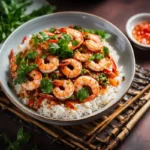
Hunan Shrimp
- Total Time: 25 minutes
- Yield: 4 servings 1x
Description
Discover the perfect balance of spice and flavor with our Hunan Shrimp recipe. A must-try dish that brings the heat and heart of Hunan cuisine to your table.
Ingredients
- 1 lb (450g) shrimp, peeled and deveined
- 2 tablespoons vegetable oil
- 1 red bell pepper, sliced
- 1 green bell pepper, sliced
- 3 garlic cloves, minced
- 1 tablespoon fresh ginger, minced
- 2–3 tablespoons chili paste (adjust based on your heat preference)
- 1 tablespoon soy sauce
- 1 teaspoon sugar
- Salt to taste
- Green onions and sesame seeds for garnish
Instructions
- Prep the Shrimp: Start by marinating the shrimp in a mixture of soy sauce and a pinch of salt for about 10 minutes. This not only seasons the shrimp but also helps tenderize them.
- Cook the Veggies: Heat a tablespoon of oil in a large pan over medium heat. Add the sliced bell peppers, stirring occasionally, until they’re just tender but still crisp. Remove them from the pan and set aside.
- Sauté the Aromatics: In the same pan, add another tablespoon of oil. Sauté the minced garlic and ginger until fragrant, about 1 minute. This step is crucial for building the dish’s foundational flavors.
- Add the Shrimp: Increase the heat to high and add the marinated shrimp to the pan. Cook until they start to turn pink, about 2 minutes.
- Combine with Sauce: Stir in the chili paste, soy sauce, and sugar. Mix well to ensure the shrimp are evenly coated. Cook for another 2-3 minutes, or until the shrimp are cooked through.
- Finish with Veggies: Return the cooked bell peppers to the pan. Toss everything together for about a minute to reheat the peppers and blend the flavors.
- Garnish and Serve: Transfer the Hunan shrimp to a serving dish. Garnish with chopped green onions and a sprinkle of sesame seeds. Serve hot with rice or your choice of side.
Notes
For a less spicy version, reduce the amount of chili paste. Serve with steamed rice or noodles for a complete meal. Can be adapted for gluten-free diets by using tamari instead of soy sauce.
- Prep Time: 15 minutes
- Cook Time: 10 minutes
- Category: Main Course
- Method: Stir Fry
- Cuisine: Chinese
Nutrition
- Serving Size: 1 cup
- Calories: 220 kcal
- Sugar: 2g
- Sodium: 900mg
- Fat: 8g
- Saturated Fat: 1.5g
- Unsaturated Fat: 5g
- Trans Fat: 0g
- Carbohydrates: 10g
- Fiber: 2g
- Protein: 25g
- Cholesterol: 180mg
Keywords: Hunan shrimp, spicy shrimp recipe, Chinese cuisine, Hunan sauce, stir fry shrimp, pescatarian recipes, healthy shrimp dish
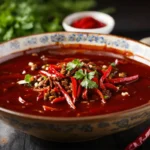
Hunan Sauce
- Total Time: 10 minutes
- Yield: 4 servings 1x
- Diet: Vegan
Description
Elevate your dishes with this authentic Hunan sauce, a perfect blend of spicy, savory, and sweet flavors, ready to transform any meal into a Hunanese delight.
Ingredients
- 1/4 cup chili paste or finely chopped fresh chili peppers for heat
- 2 cloves garlic, minced
- 1 tablespoon fresh ginger, minced
- 3 tablespoons soy sauce
- 2 tablespoons vinegar (rice vinegar preferred)
- 1 tablespoon sugar (adjust to taste)
- 2 tablespoons water (optional, for thinner consistency)
Instructions
- Prepare Ingredients: Start by finely mincing the garlic and ginger. If using fresh chili peppers, chop them finely. For a milder sauce, you can remove the seeds.
- Mix the Base: In a bowl, combine the chili paste (or chopped chili peppers) with the minced garlic and ginger. This mixture forms the spicy base of your Hunan sauce.
- Add Liquids: To the bowl, add the soy sauce and vinegar. These liquids will introduce umami flavors and a slight tanginess to the sauce, balancing the heat from the chilies.
- Sweeten the Sauce: Stir in the sugar until fully dissolved. The sugar helps to balance the spiciness and acidity, adding a subtle sweetness to the sauce.
- Adjust Consistency: If you prefer a thinner sauce, add water one tablespoon at a time, mixing well after each addition until you reach the desired consistency.
- Taste and Adjust: Taste your Hunan sauce and adjust the flavors as needed. You might want to add more sugar for sweetness, vinegar for tanginess, or chili for heat.
- Store or Use Immediately: Use the sauce immediately in your favorite dishes, or store it in an airtight container in the refrigerator for up to a week. For longer storage, freeze the sauce in a suitable container.
Notes
- This sauce is highly adaptable. Feel free to experiment with additional ingredients like sesame oil or hoisin sauce for added depth.
- Hunan sauce is perfect for stir-fries, as a marinade for meats, or as a spicy dip for appetizers.
- Prep Time: 10 minutes
- Cook Time: 0 minutes
- Category: Sauce
- Method: Mixing
- Cuisine: Chinese
Nutrition
- Serving Size: 2 tablespoons
- Calories: 35 kcal
- Sugar: 2g
- Sodium: 400mg
- Fat: 0g
- Saturated Fat: 0g
- Unsaturated Fat: 0g
- Trans Fat: 0g
- Carbohydrates: 7g
- Fiber: 0g
- Protein: 1g
- Cholesterol: 0g
Keywords: Hunan sauce, Chinese sauce recipe, spicy sauce, Hunanese cuisine, vegan sauce, homemade Chinese sauce

